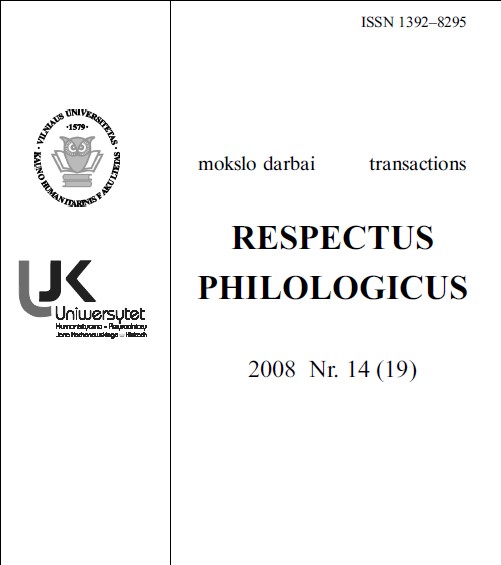DVIKALBIO ŽODYNO STRAIPSNIO SANDAROS YPATUMAI. II DALIS
BILINGUAL DICTIONARY ENTRY: PECULIARITIES OF STRUCTURE. PART II
Author(s): Danguolė MelnikienėSubject(s): Lexis, Semantics, Comparative Linguistics, Baltic Languages
Published by: Vilniaus Universiteto Leidykla
Keywords: dictionary microstructure; dictionary; entry; lemma; equivalent;
Summary/Abstract: The research focuses on one of the most topical issues of bilingual lexicography – the peculiarities of microstructure (i.e. its entry structure) in a bilingual dictionary. After the year of 2000, different Lithuanian publishers published a lot of active and passive dictionaries contrasting Lithuanian and other European languages, which are surely to be reprinted. Therefore, it is impossible to overestimate the importance of the researches (reviews, scientific articles, monographs), which aim at pointing out and eliminating the shortcomings of contemporary bilingual dictionaries. Alas, this process appears to be apparently spontaneous since a newly published bilingual dictionary does not attract the attention of lexicography specialists. In an attempt to fill in this serious research gap, five bilingual dictionaries of considerable volume published by Lithuanian publishers in 2000–2006 became the focus of this research. This two-part article analyses the similarities and differences of the entries representing the same lemmas – the polysemous nouns koja (foot, leg) and galas (end). In the first part of the article, after having defined the lemma as the nuclear of an entry, such microstructural aspects of five bilingual dictionaries were analyzed: 1) factual and grammatical characteristics of lemmas; 2) filiation and semantization of lemmas; 3) the choice of lemmas equivalents in the target language. The second part of the article presents the illustration of the lemmas koja (foot, leg) and galas (end) by providing idioms and collocations. The analysis of the bilingual dictionaries has shown that the lemmas koja (foot, leg) and galas (end) are presented, defined, translated into the other language and illustrated according to the principles of modern lexicography. However, some discrepancies were observed. It was discussed how the elimination of the drawbacks could improve the microstructure of the dictionaries and make them more effective for users.
Journal: Respectus Philologicus
- Issue Year: 2008
- Issue No: 14 (19)
- Page Range: 157-166
- Page Count: 10
- Language: Lithuanian

